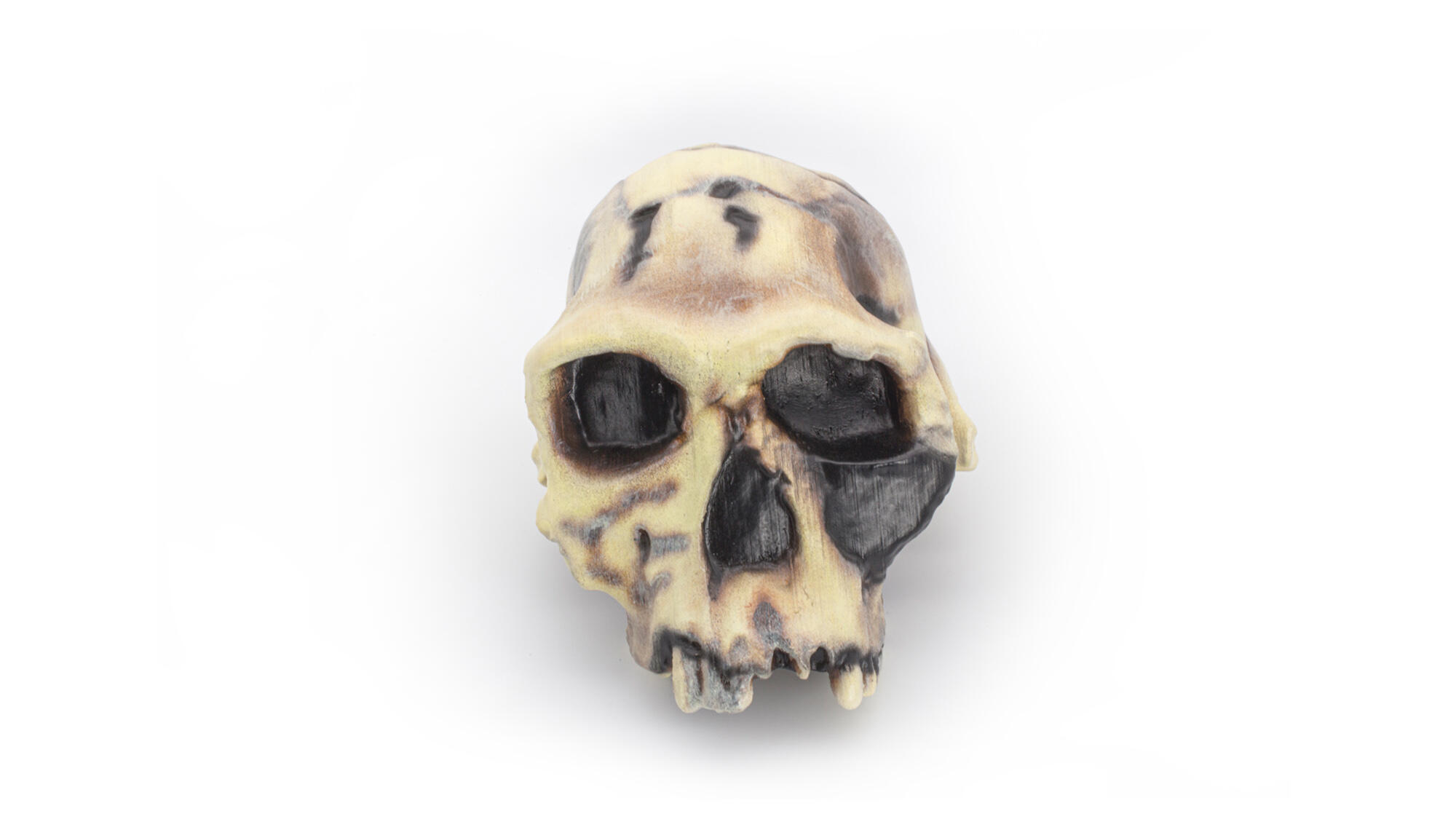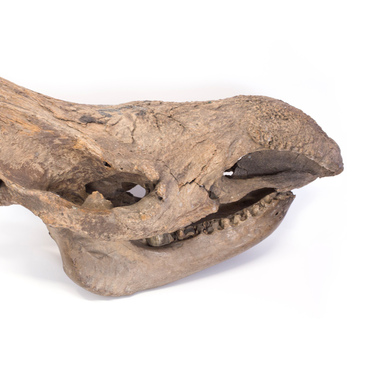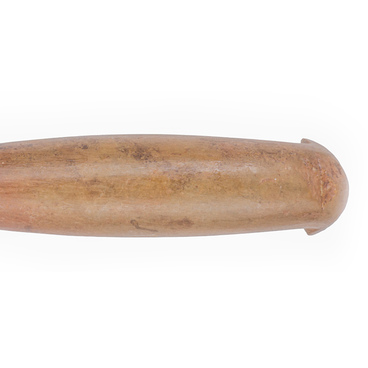The collection of the Regional Museum of Local History contains a KNM-ER 1813 skull model, which belonged to a Homo habilis. Irkutsk specialists made a copy out of plastic using 3D modeling technology.
Homo habilis is a species of ancient people who lived 1.4–2.3 million years ago on the territory of Africa. The KNM-ER 1813 skull was discovered by the famous fossil finder Kamoya Kimeu in Kenya. While working, he noticed several fragments of a jaw with well-preserved teeth on the rocky earth’s surface.
Kimeu started clearing the fragments together with anthropologists, a married couple Richard and Maeve Leakey — they extracted the skull from the ground and reconstructed it there in the field. The remains are almost completely preserved, except for the left side of the face and the upper row of teeth. Scientists searched for the remaining parts, but did not succeed in finding them. A few years later, geologist Frank Brown visited the excavation site and found a small fragment of the brow arch, which perfectly matched the original.
The skull, which was discovered in Kenya, was dated to 1.6–1.8 million years old. Initially, scientists assumed that the find belonged to the late Australopithecus or other similar species. But after they conducted research, they established that the remains belonged to a homo habilis.
Before that, in 1961, Richard Leakey’s parents Louis and Mary found a similar skull in Olduvai Gorge in Tanzania. The scientists compared the two finds and drew conclusions about what a homo habilis looked like.
The ancient people of this species were small: measuring up to 1.2 metres in height and weighing some 40-50 kilograms. A homo habilis was considered the first ancestor of modern human, who began to regularly make stone tools and created his own stone processing technique — Olduvai. To get a sharp edge, a homo habilis simply split the stone in half.
In addition, the researchers analyzed the bone remains and determined that the homo habilis was the first omnivorous ancestor of modern humans. Scientists also suggested that the brain of this representative of the genus began to grow and develop rapidly.
Homo habilis is a species of ancient people who lived 1.4–2.3 million years ago on the territory of Africa. The KNM-ER 1813 skull was discovered by the famous fossil finder Kamoya Kimeu in Kenya. While working, he noticed several fragments of a jaw with well-preserved teeth on the rocky earth’s surface.
Kimeu started clearing the fragments together with anthropologists, a married couple Richard and Maeve Leakey — they extracted the skull from the ground and reconstructed it there in the field. The remains are almost completely preserved, except for the left side of the face and the upper row of teeth. Scientists searched for the remaining parts, but did not succeed in finding them. A few years later, geologist Frank Brown visited the excavation site and found a small fragment of the brow arch, which perfectly matched the original.
The skull, which was discovered in Kenya, was dated to 1.6–1.8 million years old. Initially, scientists assumed that the find belonged to the late Australopithecus or other similar species. But after they conducted research, they established that the remains belonged to a homo habilis.
Before that, in 1961, Richard Leakey’s parents Louis and Mary found a similar skull in Olduvai Gorge in Tanzania. The scientists compared the two finds and drew conclusions about what a homo habilis looked like.
The ancient people of this species were small: measuring up to 1.2 metres in height and weighing some 40-50 kilograms. A homo habilis was considered the first ancestor of modern human, who began to regularly make stone tools and created his own stone processing technique — Olduvai. To get a sharp edge, a homo habilis simply split the stone in half.
In addition, the researchers analyzed the bone remains and determined that the homo habilis was the first omnivorous ancestor of modern humans. Scientists also suggested that the brain of this representative of the genus began to grow and develop rapidly.



